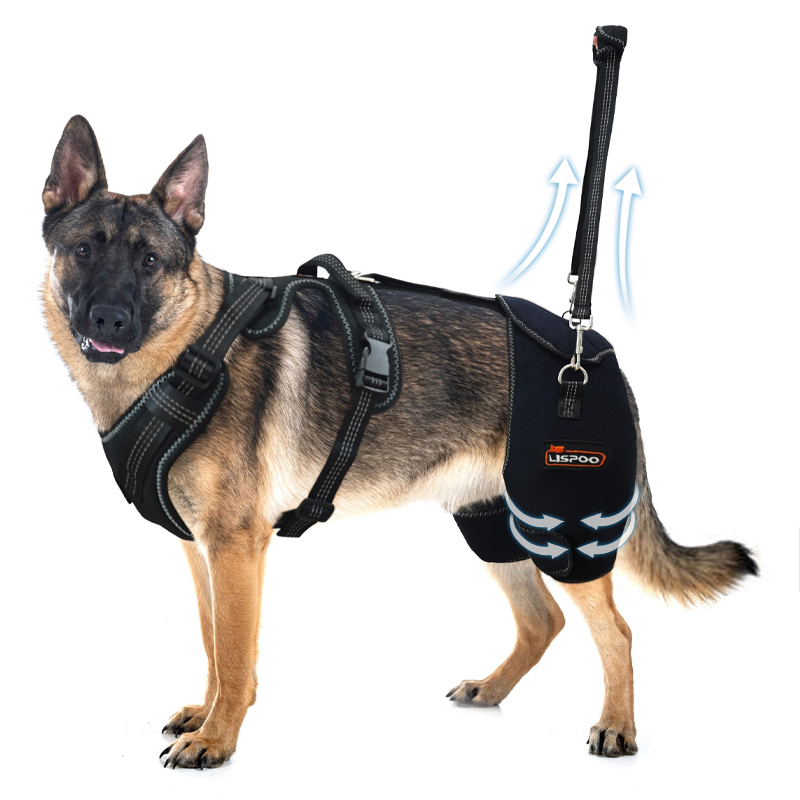As our beloved dogs age, their bodies, much like ours, undergo various changes. One of the most common issues in older dogs, especially in larger breeds, is hip problems. These can range from mild discomfort to severe pain, significantly affecting your dog's quality of life. In this blog post, we’ll explore how you can help your older dog manage hip issues, including the use of tools like a dog hip dysplasia brace to ensure they live a comfortable, happy life.
Understanding Hip Problems in Older Dogs
Hip problems in dogs are often linked to hip dysplasia, arthritis, or joint deterioration due to aging. Larger breeds like German Shepherds, Labrador Retrievers, and Golden Retrievers are more prone to these issues. Symptoms may include limping, stiffness, difficulty getting up or lying down, reluctance to exercise, and noticeable pain when touched around the hip area. For dogs diagnosed with hip dysplasia, a dog hip braces can be particularly beneficial in providing support and reducing discomfort.
Early Detection and Regular Vet Visits
Regular veterinary check-ups are crucial in detecting hip problems early. Your vet may recommend X-rays or other diagnostic tools to assess the severity of the condition. Early detection allows for better management of the problem, often slowing the progression of the disease and improving your dog’s quality of life. In some cases, your vet might suggest using a hip brace for dogs with hip dysplasia to offer additional support.
Weight Management
Excess weight puts additional strain on your dog's hips and joints, exacerbating any existing problems. Maintaining a healthy weight through a balanced diet is one of the most effective ways to help your dog. Consider feeding your dog a diet rich in omega-3 fatty acids, glucosamine, and chondroitin. These supplements are known to support joint health and reduce inflammation. If your dog is struggling with mobility due to hip issues, a hip dysplasia harness for dogs can assist in managing their daily activities without overstraining their hips.
Exercise: The Right Balance
While exercise is essential for keeping your dog’s muscles strong and maintaining a healthy weight, it's important to avoid activities that may aggravate hip problems. Low-impact exercises such as swimming or short, gentle walks are ideal. Avoid high-impact activities like running, jumping, or rough play, which can worsen hip pain. For additional support during walks, consider using leg braces for dogs with hip dysplasia to stabilize their movement and reduce stress on their hips.
Comfortable Living Environment
Creating a comfortable environment for your dog can make a significant difference in managing hip problems. Consider the following:
- Orthopedic beds: These beds provide extra support for your dog's joints and can help reduce pain.
- Ramps or steps: Installing ramps or pet stairs can help your dog get on and off furniture or navigate stairs without straining their hips.
- Non-slip flooring: Slippery floors can be challenging for dogs with hip problems. Consider adding rugs or mats to give your dog better traction. Additionally, a dog hip brace can provide extra stability and support, making it easier for your dog to move around the house.
Pain Management and Medications
Your vet may prescribe pain relief medications or anti-inflammatory drugs to manage your dog’s pain. In some cases, physical therapy or laser therapy may be recommended to improve mobility and reduce discomfort.
Surgical Options
In severe cases, where other treatments aren’t effective, your vet might suggest surgical options such as hip replacement or femoral head ostectomy (FHO). These surgeries can be costly but may significantly improve your dog’s quality of life.
Conclusion
Helping an older dog with hip problems requires a combination of early detection, weight management, appropriate exercise, and pain management. By taking these steps, and considering the use of supportive tools like a dog hip brace or leg braces for dogs with hip dysplasia, you can help your furry friend stay comfortable and enjoy their golden years to the fullest. Remember, the goal is to improve their quality of life and ensure they remain happy and pain-free as they age.



0 Comments